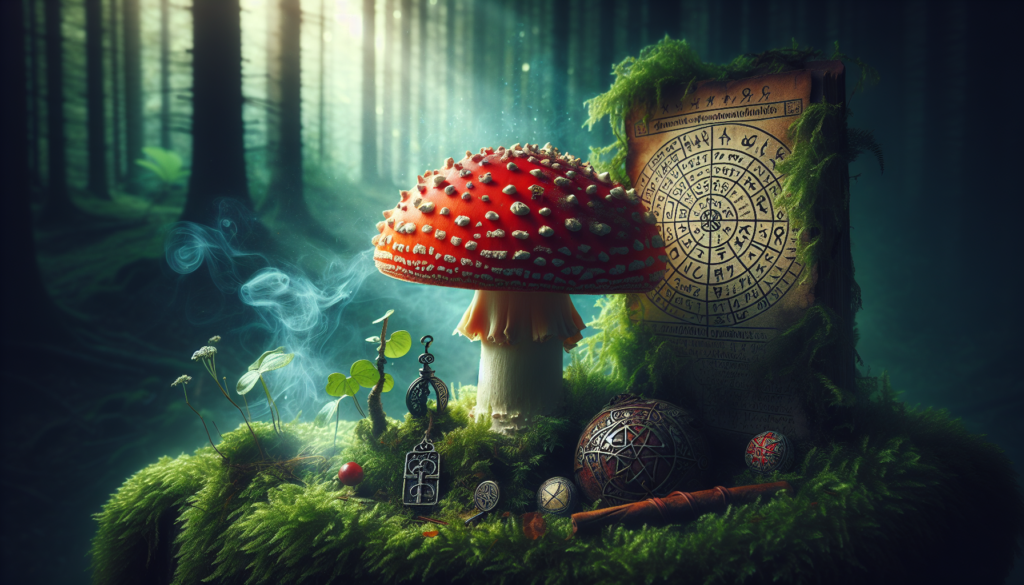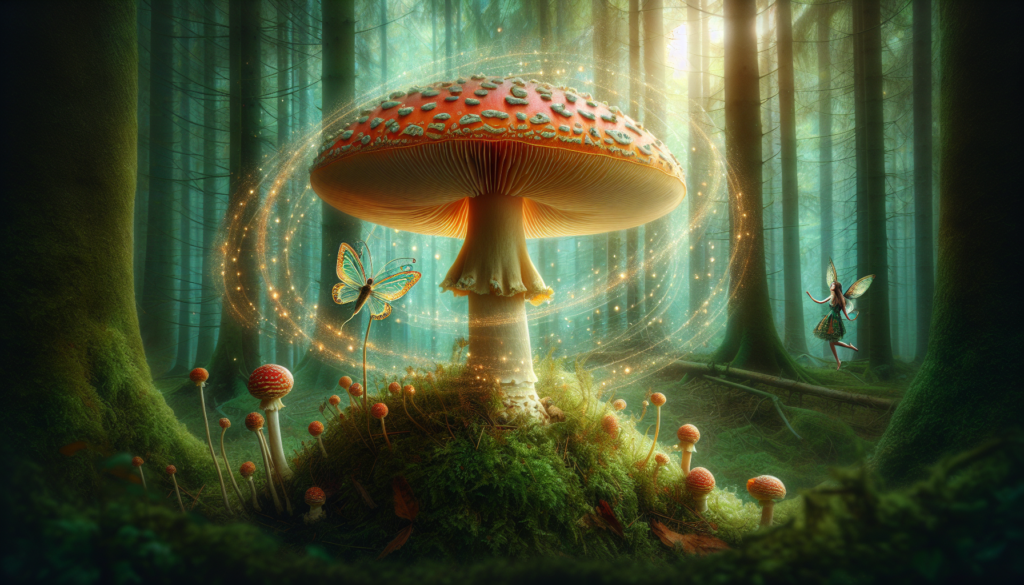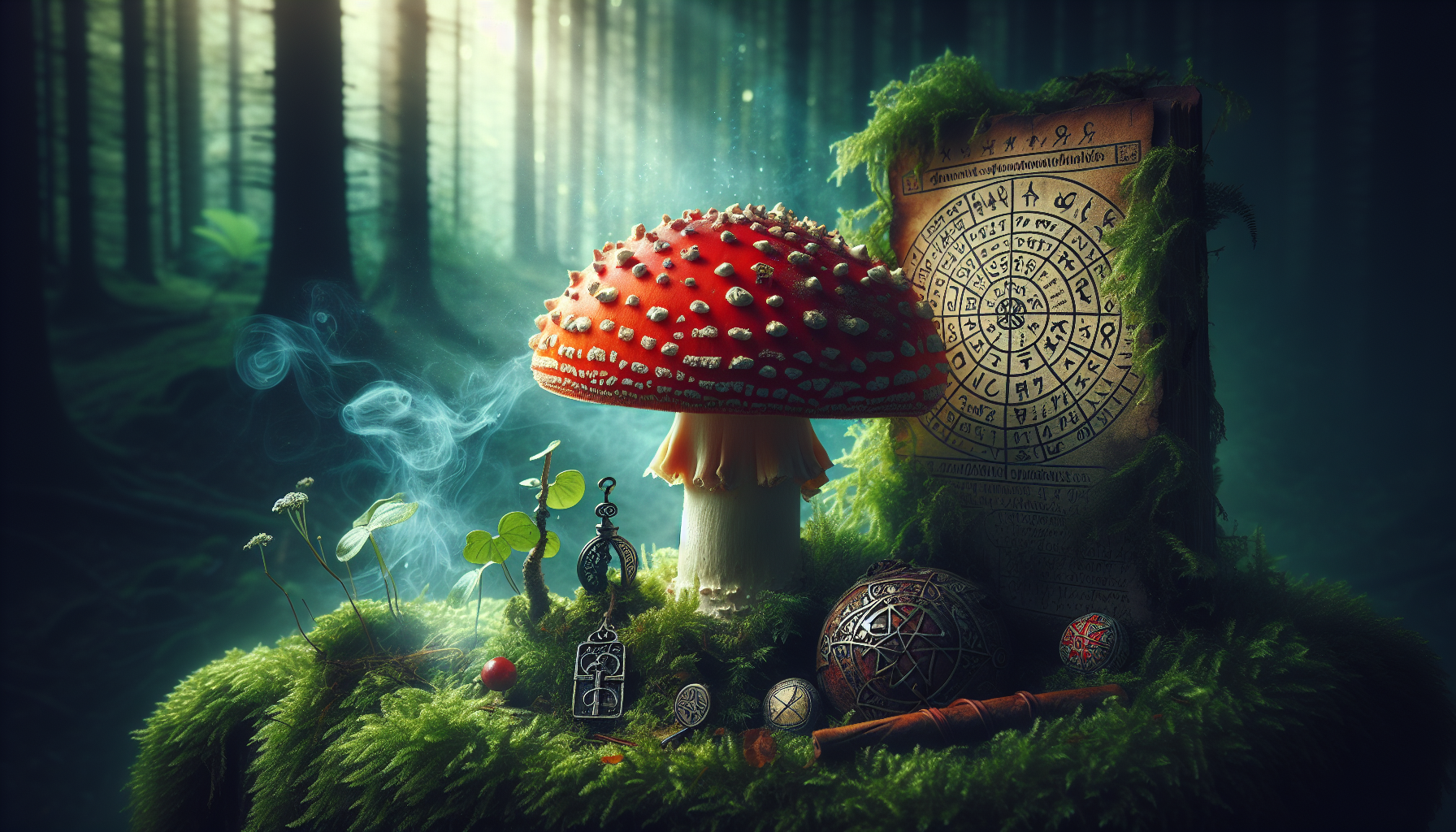Have you ever wondered why Amanita muscaria, also known as the fly agaric mushroom, has gained such popularity? This captivating article will explore the fascinating reasons behind the widespread appeal of this unique fungus. From its distinct appearance to its long-standing cultural significance, Amanita muscaria continues to captivate the imaginations of people from all walks of life. Discover the allure of this enigmatic mushroom and uncover the secrets behind its enduring popularity.
Cultural Significance
Historical Use
Amanita muscaria, also known as the fly agaric mushroom, holds a rich and fascinating history of cultural significance. This famous mushroom has been used and celebrated by various cultures throughout the ages for its unique properties. In ancient times, it played a prominent role in rituals and ceremonies, often associated with shamanic practices and spiritual journeys.
Religious and Spiritual Practices
Known for its mind-altering effects, the Amanita muscaria mushroom has been utilized in religious and spiritual practices by different cultures. In Siberian shamanism, the mushroom was considered sacred and served as a means of communication between the human and spirit worlds. The visionary experiences induced by the mushroom were believed to provide insight and guidance.
Media and Pop Culture
With its distinct appearance and cultural significance, Amanita muscaria has become a recognizable symbol in various forms of media and pop culture. It has been depicted in numerous fairy tales, paintings, and illustrations, further amplifying its allure and mystique. Its iconic red and white appearance has been adopted in various merchandise, making it a popular image associated with magic and fantasy.
Distinct Appearance
Bright Colors and Unique Shape
One of the most notable characteristics of the Amanita muscaria mushroom is its vibrant red cap with white spots. This iconic color combination and distinct shape make it instantly recognizable. The cap typically ranges in size from 5 to 20 centimeters in diameter, and as it matures, the white spots can fade or disappear.
Symbolism and Associations
The unique appearance of the Amanita muscaria mushroom holds several symbolic associations. Its red cap is often linked to notions of power, passion, and transformation, while the white spots are believed to represent spiritual purity. These features have made the mushroom a symbol of magical realms, enchantment, and the connection between the earthly and spiritual realms.

Chemical Composition
Psychoactive Compounds
The psychoactive compounds found in Amanita muscaria mushrooms are what contribute to their mind-altering effects. These compounds include muscimol, ibotenic acid, and muscarine. Muscimol is the primary psychoactive element responsible for the mushroom’s hallucinogenic properties.
Effects on the Brain and Body
Consuming Amanita muscaria mushrooms can induce a range of effects on the brain and body. These effects can include altered perception, intensified sensory experiences, enhanced creativity, and changes in mood. The exact experiences can vary depending on the individual, dosage, and set and setting in which the mushroom is consumed.
Potential Medicinal Uses
Traditional Medicinal Practices
Throughout history, Amanita muscaria mushrooms have been used in traditional medicinal practices by certain cultures. The mushroom was believed to possess healing properties, particularly in treating conditions related to pain and inflammation. It was also utilized to alleviate symptoms of anxiety and depression.
Modern Research and Applications
Modern research into the medicinal potential of Amanita muscaria mushrooms is still relatively limited. However, studies have shown promising results regarding its anti-inflammatory and analgesic properties. Additionally, the mushroom’s potential to modulate brain activity and enhance neuroplasticity has sparked interest in its potential applications for mental health disorders.

Recreational Use
Psychedelic Properties
The Amanita muscaria mushroom is well-known for its psychedelic properties, making it a sought-after substance by individuals seeking unique and transformative experiences. The consumption of these mushrooms can induce profound changes in perception, leading to dreamlike states, intense visuals, and altered consciousness.
Distinctive Experience
Recreational use of Amanita muscaria mushrooms offers a distinctive experience compared to other psychedelics. The effects are often described as dreamy, mystical, and surreal. Users may encounter a range of sensations, including euphoria, introspection, and a sense of unity with nature. However, caution should be exercised due to the potential risks and side effects associated with its consumption.
Dangers and Side Effects
Toxicity and Poisoning
Despite its cultural significance and potential benefits, Amanita muscaria mushrooms are known to be toxic if consumed improperly. The mushroom contains potent toxins that can cause nausea, vomiting, and other gastrointestinal symptoms. Severe cases of poisoning can lead to delirium, hallucinations, seizures, and even coma, making it crucial to exercise caution and proper dosage when using or consuming this mushroom.
Negative Reactions and Risks
Individuals may also experience negative reactions or risks when consuming Amanita muscaria mushrooms. These can include allergic reactions, intense anxiety or panic, disorientation, and difficulty distinguishing reality from hallucinations. Mixing the mushroom with other substances, such as alcohol or certain medications, can also increase the potential for adverse effects.
Availability and Accessibility
Habitat and Distribution
Amanita muscaria mushrooms are native to various regions of the Northern Hemisphere, including Europe, Asia, and North America. They tend to thrive in coniferous and deciduous forests, forming a symbiotic relationship with certain tree species, such as birch and pine. The mushroom’s availability and accessibility vary depending on the geographical location and climate.
Cultivation and Commercial Availability
Cultivating Amanita muscaria mushrooms can be challenging and requires specific conditions to replicate their natural habitat. As a result, their commercial availability is relatively limited compared to other mushrooms. However, there are suppliers and enthusiasts who cultivate and sell these mushrooms, allowing interested individuals to explore their unique properties.
Legal Status
Regulations and Restrictions
The legal status of Amanita muscaria mushrooms varies worldwide. In many countries, their possession, sale, and consumption are regulated or prohibited due to their potential toxicity and psychoactive effects. It is essential to familiarize oneself with the specific regulations in each jurisdiction to avoid any legal issues or health risks.
Gray Areas and Controversies
The legal status surrounding Amanita muscaria mushrooms can often be complex and subject to ongoing debates and controversies. Some argue for the decriminalization or regulated use of these mushrooms for their potential medicinal and spiritual benefits. However, concerns regarding public safety and misuse contribute to the ongoing uncertainties surrounding their legal status.
Cultural Practices and Rituals
Traditional Use in Indigenous Cultures
Amanita muscaria mushrooms have been integral to the spiritual practices and rituals of many indigenous cultures. These mushrooms have been used in ceremonies to induce altered states of consciousness, spiritual visions, and communions with the divine. The rituals involving Amanita muscaria mushrooms were deeply rooted in the cultural and spiritual traditions of these societies.
Modern Ritualistic Practices
While traditional indigenous practices continue to incorporate Amanita muscaria mushrooms, modern ritualistic uses have also emerged. Some individuals partake in intentional ceremonies, guided sessions, or group experiences to explore the mushroom’s psychedelic properties in a controlled and meaningful setting. These modern practices often emphasize safety, intention, and integration of the experiences.
Mythology and Folklore
Fairy Tales and Folk Tales
Amanita muscaria mushrooms have captured the imaginations of storytellers throughout history, appearing in numerous fairy tales and folk tales. They often feature as enchanting icons, granting wishes or providing access to magical realms. These stories reinforce the symbolic associations of the mushroom and contribute to its enduring popularity in popular culture.
Symbolism in Mythology
The significance of Amanita muscaria mushrooms in mythology extends beyond fairy tales. In some cultures, they are associated with gods or deities, while in others, they represent fertility and rebirth. Their inclusion in mythological narratives reinforces their symbolic power and reinforces their role in cultural and spiritual practices.
In conclusion, Amanita muscaria mushrooms have played an integral role in human culture for centuries. Their distinct appearance, chemical composition, and cultural practices associated with them have contributed to their popularity and enduring significance. Whether revered as sacred entities or regarded for their recreational and medicinal properties, these mushrooms continue to captivate and intrigue individuals around the world. However, it is crucial to approach their use with caution, considering the potential risks and legal considerations associated with their consumption.



